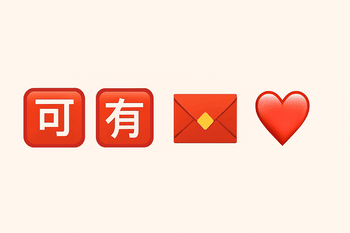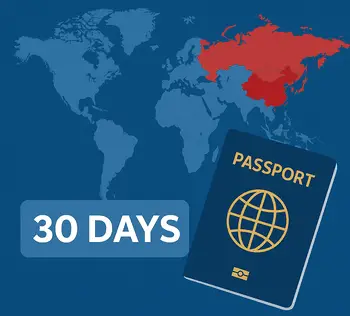
In China, emojis often have cultural, linguistic, or symbolic meanings that differ from Western interpretations.
While Western users rely on emojis for direct emotional expression, Chinese digital culture uses them for coded wordplay, implicit messages, and traditional symbolism.
Red emojis, in particular, carry layers of meaning tied to connotations like luck, love, and celebration. Navigating these meanings enables more effective and nuanced cross-cultural communication.
On platforms such as WeChat, Weibo, and Douyin, red emojis appear in everything from group chats to viral memes.
These apps not only host conversations but also shape how emojis evolve and spread across user communities.
Understanding red Chinese emojis unlocks insights into social norms, festive customs, and emerging slang trends among millions of digital natives.
Understanding Chinese Emoji Culture
Unlike many Western messaging styles that favor explicit statements and direct emotional cues, Chinese digital communication often values indirectness and subtlety.
Emojis become an extension of this implicit approach, acting as symbolic stand-ins for phrases or feelings that might seem too blunt if stated outright.
Cultural Context
Chinese culture traditionally emphasizes harmony and face-saving, making overt criticism or confrontation less common.
Emojis help soften refusals, express politeness, or hint at sarcasm without burning bridges.
For example, sending a simple sideways smile can convey polite disagreement or mild displeasure without having to spell it out.
Digital Communication Styles
Platforms like WeChat, Weibo, and Douyin function as cultural crucibles where regional slang, memes, and emoji meanings coalesce.
What starts as a niche usage in one city can go viral overnight, creating a shared shorthand that transcends age and background.
These platforms’ sticker packs and custom emoji sets further diversify how red emojis are designed and deployed.
Why Red Emojis Have Special Significance
The color red occupies a place of honor in Chinese tradition, symbolizing good fortune, joy, and vitality.
This cultural reverence naturally carries over into the realm of digital symbols, where the hue amplifies an emoji’s emotional weight.
Symbolism of the Color Red in Chinese Culture
Red is the quintessential festive color in China. It adorns Lunar New Year decorations, wedding garments, and the iconic hongbao (red envelopes) filled with lucky money.
Wearing red during celebrations is believed to ward off evil spirits and attract positive energy, embedding the color with auspicious power that dates back millennia.
Impact on Emoji Interpretations
When an emoji incorporates red—whether as a heart, envelope, or Chinese character—it instantly gains a layer of cultural resonance.
A red heart may signal deeper sincerity, while a red envelope emoji evokes generosity and celebration.
Conversely, red kanji emojis borrowed from Japanese sets can carry technical labels (like “free” or “acceptable”) that require contextual decoding.
Common Red Chinese Emojis and Their Hidden Meanings
Below is a summary of frequently used red emojis, their Unicode names, and how Chinese users interpret them.
Table 1: Common Red Chinese Emojis and Their Meanings
| Emoji | Unicode Name | Chinese Interpretation | Western Interpretation | Notes |
|---|---|---|---|---|
| 🉑 | Squared CJK Unified Ideograph-5408 | Acceptable; permission granted | “OK”; approval | Often answers questions affirmatively |
| 🈶 | Squared CJK Unified Ideograph-6709 | Not free; there is a fee | “Paid”; cost involved | Used jokingly about prices or materialism |
| 🈚 | Squared CJK Unified Ideograph-7121 | Free of charge; nothing | “Free”; zero cost | Emphasizes freebies or no cost offers |
| 🧧 | Red Envelope | Virtual lucky money gift | Festive greeting; gift | Common during New Year and weddings |
| ❤️ | Red Heart | Deep affection; sincerity | Love; strong liking | Carries extra warmth in Chinese chat |
Each of these emojis carries layers of meaning beyond their basic glyphs.
Below we explore their nuances and usage tips.
🉑 (Acceptable)
This red kanji emoji literally represents the word “acceptable” or “permitable” and often substitutes for a simple “yes” or “OK” in response to questions. It’s frequently used to inject a formal yet friendly tone into group chats and can carry motivational overtones in inspirational messages.
🈶 (Not Free)
Translating to “not free” or “fee-charging,” this emoji originates from the Japanese word 有料 (yūryō) but has been embraced in Chinese online conversations. Users employ it to comment on prices, mock materialistic attitudes, or humorously lament unexpected costs.
🈚 (Free)
Literally meaning “nothing” or “free of charge,” this symbol flips 🈶 on its head. Brands might use it to advertise giveaways, while friends use it to indicate they have no obligations or free time. It underscores generosity or zero-cost situations in a single character.
🧧 (Red Envelope)
A cornerstone of Chinese festive culture, the red envelope emoji symbolizes gifting money for good luck. In digital form, it often accompanies virtual hongbao exchanges on WeChat, signaling the act of sending or receiving blessings and cash.
❤️ (Red Heart)
While universally recognized as a symbol of love, the red heart in Chinese chats carries an added layer of sincerity. It reinforces emotional bonds and gratitude, making it especially powerful in personal messages and public social media comments.
How to Use Red Chinese Emojis Appropriately
Red emojis can enrich your digital interactions—but only if used thoughtfully. Below are best practices to ensure your messages land as intended.
Do’s
- Use red heart ❤️ to express genuine affection or deep gratitude.
- Send 🧧 during festive seasons to participate in tradition and show goodwill.
- Employ 🉑 when affirming plans or approvals in group chats.
- Offer 🈚 to highlight free resources or to playfully tease about your schedule.
- Combine red emojis with text for clarity when addressing international contacts.
Don’ts
- Don’t overuse red emojis in formal or professional contexts—they may seem overly casual.
- Avoid sending 🧧 outside celebratory occasions, which can dilute its festive impact.
- Refrain from mixing multiple red kanji emojis without context; it may confuse recipients.
- Don’t assume every Chinese speaker interprets red emojis the same way—regional variations exist.
- Avoid pairing red emojis with negative messages, as it creates mixed signals.
Advanced Tips for Interpreting Red Emojis in Context
Context drives meaning. Before you hit send, consider:
- The Platform: Each app’s design tweaks emoji appearances. A red heart on WeChat may look flatter than on iOS, subtly affecting tone.
- Audience Demographics: Younger users might adopt red emojis in meme formats, while older contacts prefer traditional symbolism.
- Textual Cues: Emojis often accompany pinyin, slang, or homophone jokes. Spotting these cues unlocks fuller interpretations.
- Evolving Trends: Chinese netizens constantly repurpose emojis. Follow official emoji updates and community forums to stay current.
- Local Feedback: When in doubt, ask a Chinese friend or colleague. Direct clarification prevents miscommunication and shows cultural respect.
Conclusion
Red Chinese emojis are far more than decorative symbols—they are compact vessels of cultural history, social nuance, and evolving internet slang.
Mastering their meanings empowers you to connect authentically with Chinese-speaking audiences, avoid awkward misunderstandings, and join in festive traditions across digital platforms.
Sources and External Links
- Chinese Emoji Meaning: The Hidden Messages Behind Popular Symbols – FEC Vietnam (https://fecvietnam.edu.vn/chinese-emoji-meaning/)
- Rednote Emoji Guide, Understand Social Expressions – Rednote Emoji (https://rednoteemoji.com/)
- What Do the Chinese or Kanji Emojis Mean? – wikiHow (https://www.wikihow.com/What-Do-the-Chinese-Emojis-Mean)


